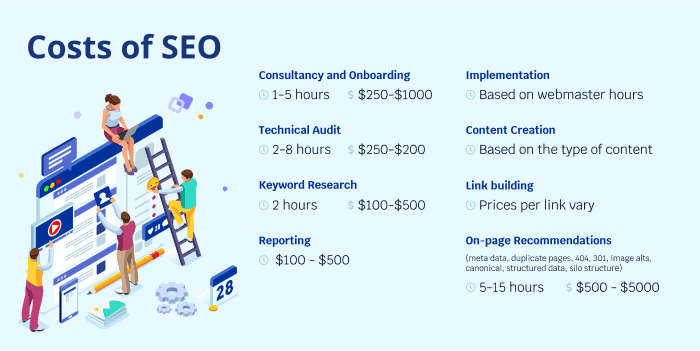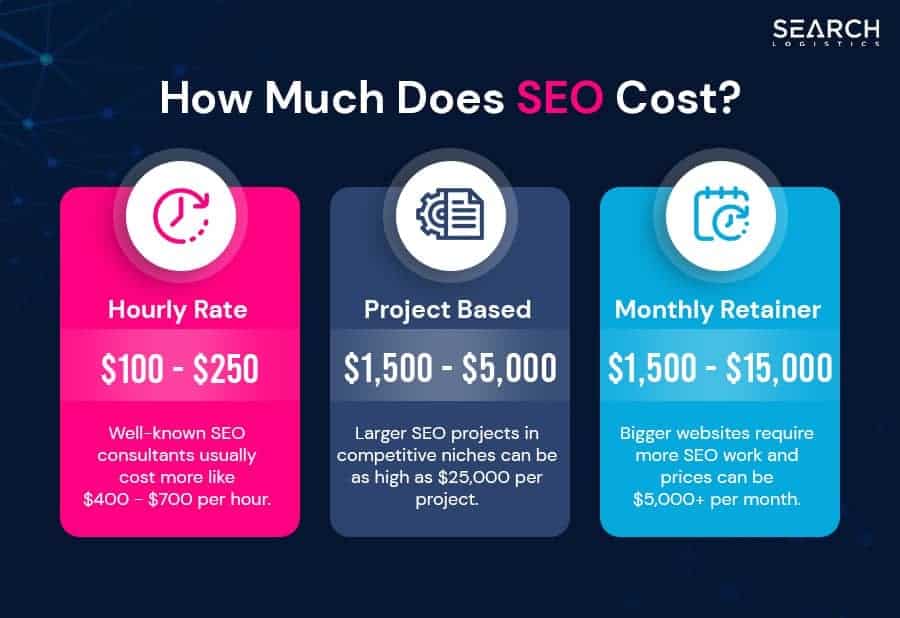Are you a business owner looking to improve your website’s search engine rankings?
Understanding how SEO pricing works and how the cost of services is determined can be crucial when selecting the right agency or consultant for your needs. In this article, we will explore the different factors that contribute to an SEO pricing structure and provide insights into how professionals determine the cost of their services.
By the end, you’ll have a clearer understanding of what to expect and how to make an informed decision that aligns with your budget and goals.

Factors to Consider in Determining SEO Pricing
When determining the pricing for your SEO services, there are several factors that need to be taken into consideration. These factors will help you determine the value of your services and ensure that the pricing is fair for both you and your clients. Here are some key factors to consider when determining SEO pricing:
Client’s Goals and Objectives
The first factor to consider is the client’s goals and objectives. What are they hoping to achieve with their SEO campaign? Are they looking to increase website traffic, improve search engine rankings, or generate more leads and conversions? Understanding the client’s goals will help you tailor your SEO strategies and determine the level of effort required, which will, in turn, affect the pricing.
Competitive Analysis
Another important factor to consider is the competitive landscape in the client’s industry. Conduct a thorough competitive analysis to understand the level of competition they are facing and the strategies their competitors are using. This analysis will help you identify the level of effort required to outrank the competition and determine the pricing accordingly.
Keyword Research
Keyword research is a crucial aspect of any SEO campaign. It involves identifying the keywords and phrases that are relevant to the client’s industry and target audience. The cost of keyword research will depend on the number of keywords to be targeted and the level of competition for those keywords. Consider the time and resources needed for keyword research when determining the pricing.
Content Creation
Content creation plays a significant role in SEO. High-quality and engaging content can help improve search rankings and drive organic traffic. The pricing for content creation will depend on the volume and complexity of the content needed, as well as the expertise required to create it. Consider the time and resources needed for content creation when determining the pricing.
Website Audit and Optimization
Before implementing any SEO strategies, it is essential to conduct a thorough website audit to identify any issues that may be impacting search rankings. The cost of website audit and optimization will vary depending on the size and complexity of the website. Consider the time and expertise required for website audit and optimization when determining the pricing.
Technical SEO
In addition to website audit and optimization, technical SEO is another crucial aspect to consider. Technical SEO involves optimizing the website’s infrastructure and addressing technical issues that may be affecting search rankings. The pricing for technical SEO will depend on the complexity of the website and the level of technical expertise required.
Link Building
Link building is an integral part of any SEO campaign. It involves acquiring high-quality backlinks from reputable websites to improve search rankings and increase organic traffic. The cost of link building will depend on the number and quality of backlinks needed, as well as the outreach and relationship-building efforts required. Consider the time and resources needed for link building when determining the pricing.
Social Media Management
Social media can play a significant role in SEO, as it helps improve brand visibility and engagement. Social media management involves creating and managing social media profiles, posting relevant content, and engaging with the audience. The pricing for social media management will depend on the number of platforms to be managed and the level of engagement required.
Reporting and Analytics
Providing regular reports and analytics to clients is essential for monitoring the progress of the SEO campaign. The cost of reporting and analytics will depend on the level of detail and frequency of the reports, as well as the tools and software used. Consider the time and resources needed for reporting and analytics when determining the pricing.
Additional Services
Lastly, consider any additional services that you may offer as part of your SEO package. This could include services like local SEO, mobile optimization, content marketing, or website design and development. The pricing for these additional services will depend on the complexity and level of expertise required.
By carefully considering these factors and their impact on the level of effort and resources required, you can determine fair and competitive SEO pricing for your services.
Different SEO Pricing Structures
When it comes to SEO pricing, there are several pricing structures you can choose from. Each pricing structure has its advantages and disadvantages, and the choice will largely depend on your business model and the needs of your clients. Here are the different SEO pricing structures to consider:
Hourly Rate
Hourly rate pricing is based on the amount of time spent working on the client’s SEO campaign. This pricing structure is suitable for projects with a defined scope of work or for clients who require occasional SEO services. The advantage of hourly rate pricing is that it provides transparency and flexibility. Clients can see exactly how much time is being spent on their project and can adjust the scope of work and budget accordingly. However, the disadvantage is that clients may be hesitant to pay for time spent on non-tangible tasks like research or brainstorming.
Monthly Retainer
Monthly retainer pricing involves charging clients a fixed monthly fee for a set number of SEO services. This pricing structure is suitable for clients who require ongoing SEO services and prefer to have a predictable monthly expense. The advantage of monthly retainer pricing is that it provides stability and allows for better planning and budgeting. Clients can have peace of mind knowing that their SEO needs are taken care of each month. However, the disadvantage is that clients may feel locked into a long-term commitment and may not see immediate results.
Project-Based
Project-based pricing involves charging clients a fixed fee for a specific SEO project or campaign. This pricing structure is suitable for clients who have a one-time need or a specific goal in mind. The advantage of project-based pricing is that it provides clarity and simplicity. Clients know exactly what they are paying for and can have a clear expectation of the deliverables. However, the disadvantage is that it may be challenging to accurately estimate the time and resources required for the project, leading to potential under or overcharging.
Performance-Based
Performance-based pricing is based on the results achieved from the SEO campaign. This pricing structure is suitable for clients who are primarily focused on outcomes and are willing to pay based on the success of the campaign. The advantage of performance-based pricing is that it aligns the interests of the client and the SEO provider. Clients only pay if the desired results are achieved. However, the disadvantage is that it can be challenging to define and measure the specific metrics for success and agree on the appropriate pricing based on those metrics.
Each SEO pricing structure has its pros and cons, and the choice will vary depending on your business model, the needs of your clients, and the level of risk you are willing to take. It is essential to clearly communicate your pricing structure to clients and ensure that both parties have a clear understanding of the expectations and deliverables.









